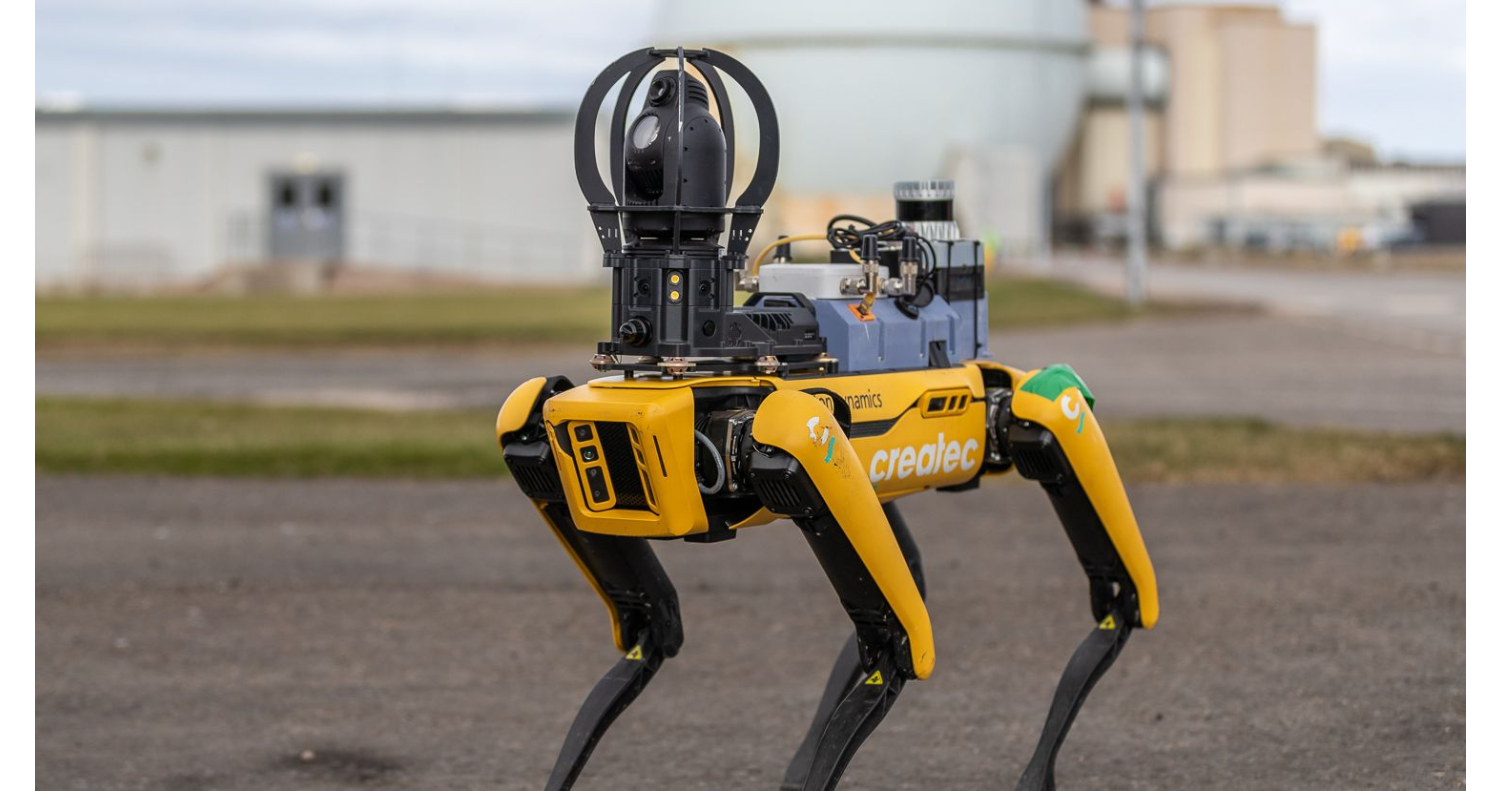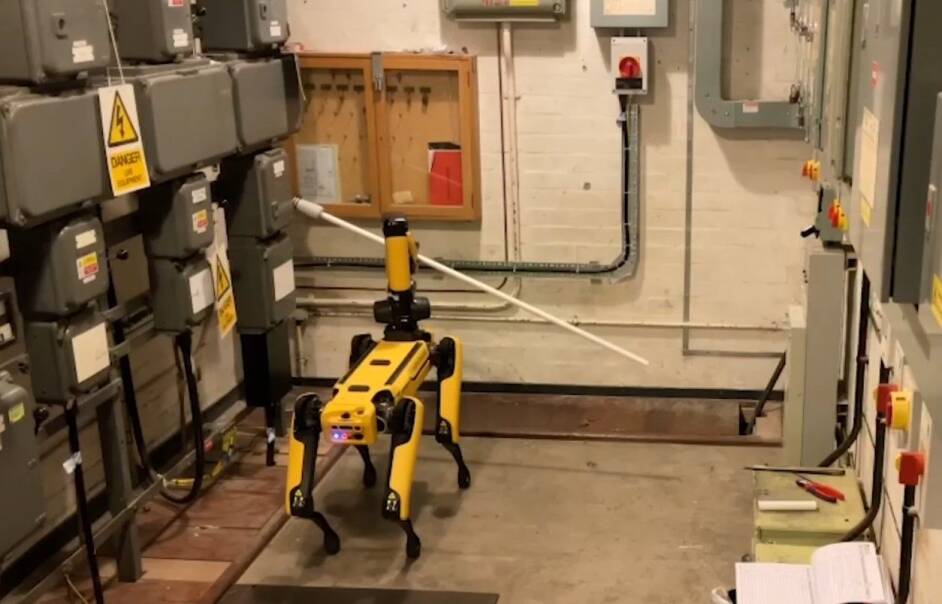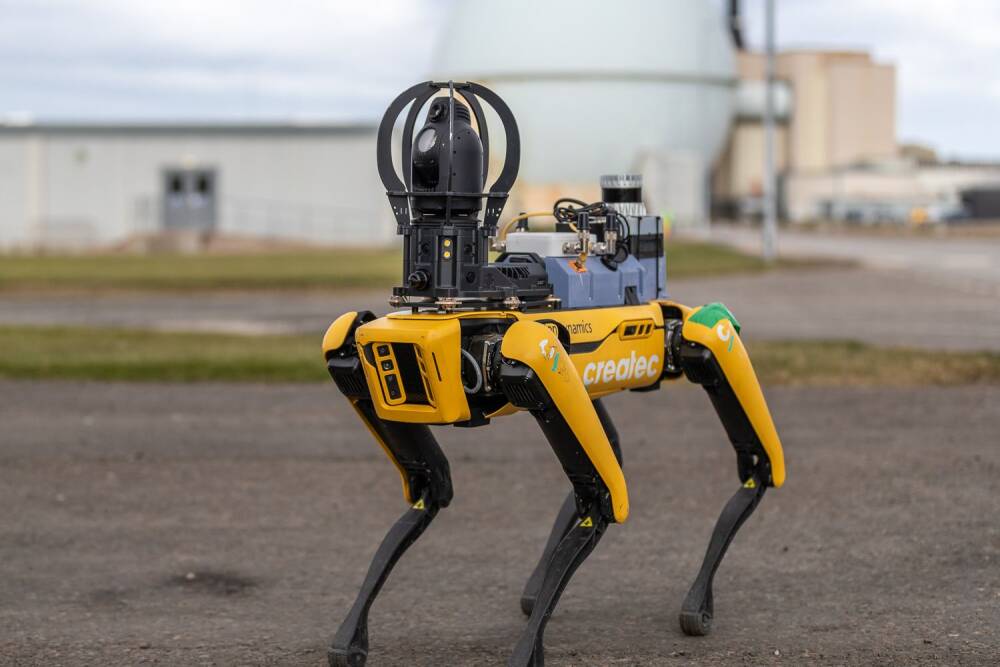
Robot quadruped enters hazardous areas on decommissioning site to operate switches
Dounreay is a former nuclear site managed by the Nuclear Decommissioning Authority (NDA), and is Scotland’s largest nuclear decommissioning site.
Such sites are full of hazards, and workers must follow strict safety protocols to limit exposure risks associated with ageing infrastructure, from radiation to electrical hazards. That limits where they can go, and how long they can spend in certain areas.
It is much easier for robots to enter hazardous areas – allowing potentially hazardous tasks to be performed without putting humans at risk, with humans acting as remote robots operators instead of entering the areas

themselves.
A challenge for robots, however, is operating controls that were designed for human dexterity.
One such challenge arose recently at Dounreay. A crane for moving waste had previously been isolated at an ageing isolation board. The board was subsequently designated to be unsafe for humans to operate due to the age and type of switch, which had the potential to fail with serious consequences to the operator.
Dounreay reached out to RAICo – a collaboration between UKAEA, The Nuclear Decommissioning Authority, Sellafield Ltd and the University of Manchester to deploy robotics and AI in nuclear decommissioning – to explore how robots could help reactivate the crane.
The project harnessed Spot, a robotic quadruped originally developed by Boston Dynamics and adapted for nuclear decommissioning applications by RAICo. Working with the teams at Dounreay, RAICo equipped Spot to hold and manipulate a pole capable of interacting with the isolation board.
After trials on a mock-up switch, Spot – which was being controlled remotely from a different room – entered Dounreay’s switch room and operated the switch to turn the crane back on. The solution was developed and deployed in just three weeks.
John Wilkinson, Remote Handling Operations Lead at RAICo, said:
“This is a fantastic example of a collaboration which has accelerated the deployment of robotic technology to solve real-world challenges
“The task involved operating an isolation board, which may not sound like a big deal. But whilst robots are the obvious solution for manual tasks in hazardous areas, they often lack the dexterity for operations designed for humans. That is why it is so important to develop robots specifically adapted for the unique environments of nuclear.”
The story was covered by BBC news: https://www.bbc.co.uk/news/articles/cn4j833zkqwo
NRS - Nuclear Restoration Services
Robot quadruped enters hazardous areas on decommissioning site to operate switches
Dounreay is a former nuclear site managed by the Nuclear Decommissioning Authority (NDA), and Scotland’s largest nuclear decommissioning site.
Such sites are full of hazards, and workers must follow strict safety protocols to limit exposure risks associated with ageing infrastructure, from radiation to electrical hazards. That limits where they can go, and how long they can spend in certain areas.
It is much easier for robots to enter hazardous areas – allowing potentially hazardous tasks to be performed without putting humans at risk, with humans acting as remote robots operators instead of entering the areas themselves.

A challenge for robots, however, is operating controls that were designed for human dexterity.
One such challenge arose recently at Dounreay. A crane for moving waste had previously been isolated at an ageing isolation board. The board was subsequently designated to be unsafe for humans to operate due to the age and type of switch, which had the potential to fail with serious consequences to the operator.
Dounreay reached out to RAICo – a collaboration between UKAEA, The Nuclear Decommissioning Authority, Sellafield Ltd and the University of Manchester to deploy robotics and AI in nuclear decommissioning – to explore how robots could help reactivate the crane.
The project harnessed Spot, a robotic quadruped originally developed by Boston Dynamics and adapted for nuclear decommissioning applications by RAICo. Working with the teams at Dounreay, RAICo equipped Spot to hold and manipulate a pole capable of interacting with the isolation board.
After trials on a mock-up switch, Spot – which was being controlled remotely from a different room – entered Dounreay’s switch room and operated the switch to turn the crane back on. The solution was developed and deployed in just three weeks.
John Wilkinson, Remote Handling Operations Lead at RAICo, Said:
“This is a fantastic example of a collaboration which has accelerated the deployment of robotic technology to solve real-world challenges,”
“The task involved operating an isolation board, which may not sound like a big deal. But whilst robots are the obvious solution for manual tasks in hazardous areas, they often lack the dexterity for operations designed for humans. That is why it is so important to develop robots specifically adapted for the unique environments of nuclear.”
The story was covered by BBC news: https://www.bbc.co.uk/news/articles/cn4j833zkqwo
